Types of Gable Roof
Important Point
Here, the different types of gable roof, including gable roof design and gable roof types, are as follows
- Box Gable Roofs
- Front Gables
- Cross Gable Roofs
- Gable Roof With Shed Roof Addition
- Dutch Gable Roofs
Also, Read: Top 10 Best Cement Companies In India 2022
1. Box Gable Roofs
The gable roof structure section of a box gable roof, a variant of gable type roof, is boxed at the end, with a triangular extension, known as the gable end roof, at either end of the house. This form is very similar to a regular gable roof, however the triangle element of the design is more distinct.
2. Front Gables
The entrance door is usually located under the gable meaning ‘triangular end’, of a front gable roof, a type of gable style roof. This is a frequent element in Colonial-style homes, but it is growing in popularity as a design.
3. Cross Gable Roofs
The cross gabled roof, a different type of roof, is typically composed of two or more gable rooflines that meet at an angle, usually with all the two ridges aligned perpendicularly.
Because a cross gable roof changes the form of the building’s structure, buildings with that kind of style frequently get a more complicated plan.
Homes with such a cross gable roof addition, for instance, could have distinct wings, a larger porch, or even a garage connected.
4. Gable Roof with Shed Roof Addition
The addition of a shed roof to the gable roof ridge, a component of the gable roof section, is a common modification for an extension to an existing roofing system.
This hybrid style is a popular choice for property owners wishing to expand because it allows for greater headroom and space without entirely changing the roof’s structure or looks.
5. Dutch Gable Roofs
The Dutch gable roof, illustrating the hip roof vs gable roof and gable roof vs hip roof dynamics, is a cross between a gable and a hip roof. The gable is placed on the hip roof in most types of roofs, offering greater space within the loft.
Most building owners favour this style because it enhances the aesthetic appeal of a home while also giving the practical benefit of additional room.
Also, Read: Top 10 Water Tank Brands in India
Useful Article For You
- What Is a Contour Interval
- What Is Tile
- What Is the Difference Between a Shower Pan and a Shower Base?
- What Is a Window Panel
- Type of Arch
- What Is the Measurement for a Queen Size Bed
- What Is Considered Livable Space
- What Is One Way You Can Save Electricity?
- What Is a Bundle of Shingles
- What Is a Gallon of Water Weigh
- What Is Sand Blasting
- What Is a Span Bridge
- What Is the Little Black Diamond on a Tape Measure
- What Is a Louvered Door
- What Is a Spread Footing
- What Is Leveling
- Different Types of Beam
- What Is Pedestal
- What Is Plumbing Fixtures
- Soft Floors
- What Is Slab Construction
- What Is Calacatta Quartz
- What Is Auxiliary View
- Sheepsfoot Roller
- What Is 1 Flight of Stairs
- What Is Refractory Cement
- Dry Pack Concrete
- What Is Luminous Flux Vs Lumens
- What Is a Frost Wall
- What Is an Undercoat
- What Is Road Pavement
- Arch Foundation
- What Is a Stair Landing
- What Is a Spandrel Beam
- What Is Pier and Beam Foundation
- What Is a Pile Cap
- What Is a Mat Foundation
- What Is a Floating Slab
- What Is the Purpose of Foundation
- What Is a Flush Door
- What Is Residential Construction
- What Is the Best Foundation for a House
- What Is a Benchmark in Surveying
- What Is a Engineering Drawing
- What Is an Admixture
- What Is the Standard Size Water Supply Line
- What Is the Difference Between Tension and Compression?
- What Is a Tremie
- What Is Tributary Area
- What Is Shoring Construction
- What Is a Cason
- What Is Wall Putty
- What Is the Difference Between Mortar and Concrete
- What Is Bhk
- What Is Sbc of Soil
- What Is Plinth Level
- What Is Water Proofing
- What Is Mix Design of Concrete
- What Is Fine Aggregate
- What Is Retention Money
- What Is Design Mix
- What Is Isometric Scale
- What Is Development Length
- What Is Superelevation
- What Is Wall Made Of
- What Is Micro Piling
- What Is Soil Stack
- What Is a Half Wall Called
- What Is Flagstone
- What Is a Cinder Block
- What Is Floors
- What Is a Parapet in Construction
- What Is Concept Drawing
- What Is a 30 Degree Angle
- What Is a Mezzanine Level
- What Is Plinth Area
- What Is Precipitation
- What Is a Soffit
- What Is the Difference Between Residual and Transported Soil
- What Is a Drop Manhole
- What Is Oblique View
- What Is a Flyover Bridge
- What Is Tie Beam
- What Is the Cost of 1 Bag Cement
- What Is Well Foundation
- What Is the Principle of Chain Surveying
- What Is Dlc in Road Construction
- What Are the Advantages of Levelling
- What Is Hardened Concrete
- What Is Plinth Protection
- What Is Wbm Road
- What Is Measurement Book
- What Is Traversing in Surveying
- What Is the Space Between Windows Called
- What Is a Moment Frame
- What Is 53 Grade Cement
- What Is True Slump
- What Is Joisted Masonry Construction
- What Is the Back Azimuth of 180 Degrees
- What Is Stretcher Bond
- What Is Consistency of Cement
- What Is Pointing
- What Is Design Period
- What Is Long Column and Short Column
- What Is the Full Form of Rcc
- What Is Centering in Construction
- What Is Stone Masonry
- What Is M30 Concrete
- What Is Dead Load and Live Load
What Is Gable Roof?
A gable roof, also known as gabel roof or gabble roof, is a typical roof gable style that can be found on a variety of structures.
This will have 2 sloping sides which eventually forms a ridge, as well as the triangle shape generated on both side will be the easiest way to identify it.
Gable roofs are great for cold-weather places since they can readily drain water as well as snow, but they can be troublesome in high-wind places if indeed the frames were not properly supported.
Gable roofs are another good choice for individuals who want more headroom in their loft conversion and greater ventilation in the attic. It’s also known as the A-shaped part of the wall that connects the two intersecting sloping sides.
It’s worth noting that all these sides can vary in size depending on the property, and bigger residential structures may have two or more gables to offer structure and depth.
Also, read: Abrasion Test | Test to Determine the Abrasion Value | Abrasion Test Principle | Important of Abrasion Test
How to Build Roof?
A gable shape roof, often confused with gabel roof, is made up of two parts that slope in opposing directions from the roof ridge. These are arranged so that the highest, horizontal edges meet to form the roof ridge’s top point.
Depending on the size of the land, the pitch and height of the gutters may differ. A ridge board runs parallel to the exterior walls as well as extends all along roof’s maximum height or peak.
The tops of the typical rafters are tacked to the ridge board. Those rafters slope downwards and thus are nailed to the ceiling joists as well as the outer walls.
To extend the life of the gable roof until it needs replacing, it will require regular roof maintenance. A skilled roofer must evaluate your roof at least twice a year.
Gutters must be cleansed double the a year, irrespective of roof type, and broken gutters must be fixed or replaced. Clear any debris that has accumulated on your roof. If moss or mold is forming on your roof, this should be removed before your roof deteriorates and leaks.
Nevertheless, one ought not walk on a slanted roof even without appropriate safety devices, but it’s always preferable to contact a roofing professional.
Experts get the knowledge and experience to examine your roof and identify problems before they worsen, as well as determine whether this is time to repair your roof while your home sustains major structural damage.
Also, read: 10 Best Cement Companies In India
History of Gable Roofing
Gable roofs, including the peaked roof or side gable roof, have been employed in temples from the early days of ancient Greece. Since then, gable roofs have been regarded as an architectural standard in northern Europe and America.
A front-gabled building is one that has a gable that faces the street. A side-gabled structure, on the other hand, has its ridge parallel to the street and faces it with its cullis or gutter.
Front-gabled buildings were the norm in German city streets during the mediaeval gothic period. Side-gabled buildings became prominent throughout the Renaissance period, during the 14th and 17th centuries, and were influenced by Italian architecture.
Front-gabled houses became common in America between the early 1800s and 1920. Solar panels can also be installed more easily on gable roofs.
Your solar panels will need to be put on brackets on a level roof or one with a very low slope so that they may be tilted for optimal sun exposure.
A roofer can install solar panels on a gable roof without using brackets if the pitch isn’t too steep (greater than 40°).
Also, Read: Pitched Roof Diagram
Advantages of Gable Roof
1. Simple to Set Up
The shape and model of a gable roof, highlighting the roof gables, are straightforward. As a result, this roof is simple to build and does not take a long time. This roof can also be customized to fit the style of your home. You can change the angle of the roof to suit your needs.
2. Installation Is Less Expensive
Aside from being simple to install, a gable roof also has a low cost of installation. The structure of this roofing material is quite simple, which makes it easy to install and reduces the costs associated with installing this roof.
Roofs that require a lightweight steel or wood frame are less expensive than other roof designs.
3. Make Houses More Comfortable
Inside the house, slanted roofs create extra outside air spaces. As a result, the house is difficult to heat and the owner is uncomfortable. Only the high roof surface will be exposed to the sun’s heat. The colder your home is, the higher the roof is.
4. Leaks Are Kept to a Minimum
A major benefit of a gable roof is that it is difficult to leak. This is because the roof is shaped like a triangle, allowing water to flow directly downwards. This reduces the amount of leakage caused by stagnant water.
5. Make Use of the Ceiling’s Unused Space
The next benefit we’ll cover is the utilization of unused space within the ceiling. Users of this roof, in general, have an empty area inside the ceiling that can be used for many reasons. For example, you may use the space for storage or, if it’s large enough, as an extra bedroom.
Also, read: Mortar Vs Cement | Type of Cement | Type of Mortar
Useful Article for You
- Zero Force Members
- How Much Does a Yard of Concrete Weigh
- Cmu Wall Meaning
- Gradient Road
- Budget Sunroom Ideas
- What Is Gypsum Board
- Types of Vaulted Ceilings
- How Does Baking Soda Remove Blood from Carpet
- What Are Forms in Construction
- How Heavy Is Dirt
- Tender Meaning in Architecture
- Dark Olive Green House
- Cast in Place Concrete
- Lean to Roof
- How Tall Is an Average Door
- Grade Beam Foundation
- Window Sill Height
- Concrete Cold Joint
- Types of Traps
- Types of Pipe
- Wood Supporting Beams
- Finishing Plaster
- Home Depot Scrap Wood
- Lvl Beam Size Calculator
- Structural Shell
- Curb Types
- Msand
- Optimum Dry Meaning
- Disadvantages of Low-E Glass
- Bridge Abutment Definition
- Build Materials List
- Composite Masonry Wall
- Is Cedar a Hardwood or Softwood
- Modified Proctor Test
- Physical Properties of Sand
- Crane Machine Construction
- Types of Gable Roofs
- Door Frame Types
- How Much Does 55 Gallons of Oil Weigh
- Dog Leg Stairs
- Concrete Salt Finish
- Westpoint Bridge Builders
- Types of Porches
- Hempcrete Disadvantages
- Roof Pitch Types
- Types of Weirs
- Asphalt Floor
- Dutch Roof
- #6 Rebar Weight Per Foot
- Prizmatic Compass
- Bond Break Concrete
- Poured Concrete Wall Cost Calculator
- How Many 60 Lb Bags of Concrete in a Yard
- Wood Fence Post Spacing Chart
- Falsework
- Design of Building Structures
- Topping Slab
- Types of Cinder Blocks
- Fresh Concrete
- Door Colors for Red Brick House
- Clear Cover Concrete
- Tiles Brand
- Cement Consumption in Plaster
- Aggregate Density Kg M3
- Weight of Concrete Slab Calculator
- Is Clay Smaller Than Silt
- How to Calculate Dead Load
- Bad Concrete Work
- Stepped Foundations
- Residential Construction Cost Estimator Excel
- Different Construction Trucks
- Septic Pump Replacement Cost
- Dead Load Calculator
- Beam Vs Column
- Concrete Mix Ratio
- Caisson Foundation
- Glulam Beam Weight Calculator
- Bituminous Pavement
- M30 Mix Ratio
- Is 2502
- Reinforced Brick Work
- Plinth Level
- Trapezoidal Footing Formula
- Slab Steel Calculation
- Rolling Margin of Steel
- Top 20 Pvc Pipe Brands in India
- Top 5 Cement in India
- How Much Weight Can a 6×6 Support Horizontally
- Modulus of Rupture Formula
- Types of Curtains
- Building Estimate Excel Sheet
- How Is the Skeleton Similar to the Frame of a House?
- Which of the Following Best Explains Why Buildings Tip During Earthquakes?
- Rate Analysis of Civil Works
- Water Tank Company Name
- 1 Soot in Mm
- Reinforcement Lap Length Table
- Camber in Road
- Rate Analysis of Plaster
- Ply Company Name
- Boq Full Form in Tender
- Well Point
- Plastering Ratio
Disadvantages of Gable Roof
1. Vulnerability
This gable roof, a gable style roof, is suited for use and will last for those of you who live in places with consistent weather. In contrast to your experience, if you live in an area with extreme weather, the roof construction is more likely to collapse if impacted by severe winds.
2. Cracking Is Simple
A gable roof is typically made out of a structure and tiles. It’s important to remember that the roof is always exposed to sunshine and rain.
As a result, the roof is prone to cracking over time and must be repaired. To make the roof more robust, use heat-resistant and waterproof coatings.
3. Water Loads Should Be Considered
Because of its sloping slope on two sides, the gable roof is difficult to leak. However, if the roof is installed too gently, it will be unable to survive the rain.
The steeper the roof’s incline, the more vulnerable it is to collapse. To avoid this, make the roof slope at a steep angle.
4. Carefully Install the Gable Roof
To prevent the roof from collapsing, you must pay close attention to the roof’s installation. When putting up the roof, think about it carefully.
For the roof angle, go with a 40-degree angle. This allows water to flow freely downward and prevents the tile from absorbing too much water.
Also, read: Soak Pit Design | Health Aspects | Operation and Maintenance of Soak Pit | Applicability of Soak Pit Design
Gable Roof Components (Parts of a Gable Roof)
A gable roof, including its gable roof structure and gable roof components, is one that resembles the houses your children sketch. It features two sloping sides that meet at a point in the middle.
- Ridge: The ridge is the highest point on your roof. On a sloped roof, it’s the highest point.
- Eaves: The lower edges of the roof that overhang the home’s outer walls are known as the eaves. In the diagram above, an eave on the opposite side of the house is also in the same location.
- Gable: The Gable is the A-shaped side wall of the house that forms the roof’s pinnacle. The home shown above features two gables, one on each end.
- Rake: The section of the roof that finishes over a gable end is known as the rake.
Also, read: What is CBR Test in Civil
Cost of Gable Roofing Construction
Construction costs for a gable type roof, including gable roof design, range from $8 to $16 per square foot on average. On average, the cost of a 1000 square foot roof is from $ 8000 to $16,000. Additional gables and dormers can raise the price of a home.
Gable Roof
Gable roof shapes. Gabled roofs are the kind young children typically draw. They have two sloping sides that come together at a ridge, creating end walls with a triangular extension, called a gable, at the top.
Gable Roof Installation
Cut a support and line it up with the edge of the rafter. Use construction nails to secure it to the outside of the top plates. Place another vertical support 2 in (5.1 cm) apart from the first. Build supports on each gabled side of your roof.
Gables Roofing Corp
Gables Roofing Has 5.0 Stars.
Golden Gables Roofing
With that done the next thing I’m gonna do is I’m going to use my jig saw to get it.
Hip and Gable Roof
The main difference between a hip and gable roof are the slopes on its sides. On a hipped roof, all sides slope downward to the home’s walls. Gable roofs only have two triangle-shaped slopes that extend from the bottom of the roof’s eaves to the peak of its ridge.
Gable End Trim Metal Roof
Apply caulking one inch to the notch side of the gable. The caulking side of gable should under lap the second piece of gable as shown.
Gable Roof Barn
The gable barn is a classic design defined by a triangular end under a dual-pitched roof. Gable barns appeared during the nineteenth century; the style became popular because it could be easily expanded by adding to the gable end.
Double Gable Roof
A roof composed of two parallel gables forming the shape of the letter m on the end wall.
Gable Roof Replacement Cost
How long does a gable roof last? Although there are a variety of factors that help determine how long the lifespan will be, one that’s properly installed can typically last about 40 years on average. They can sometimes last even longer if they have an adequate supporting framework.
Gable End Metal Roof Trim
Also known as rake trim, gable trim is a finishing piece of metal flashing used along the edges of a metal roof line where the edge of the metal roof panel meets the endwall panels.
Like this post? Share it with your friends!
Suggested Read –
- Types of Masonry Joints
- Methods of Design | Difference Between Working Stress Method and Limit State Method
- Difference Between Flexible Pavement and Rigid Pavement | What is Pavement | Type of Pavement
- Difference Between 33, 43 and 53 Grade Cement
- 14 Difference Between One Way Slab and Two Way Slab | What is Slab
- Difference Between 33, 43 and 53 Grade Cement
- Heartwood Vs Sapwood | What Is Sapwood | What Is Heartwood
- 14 Difference Between One Way Slab and Two Way Slab | What is Slab
- What Is Slump Cone Test | Principle of Slump Test | Types of Concrete Slump
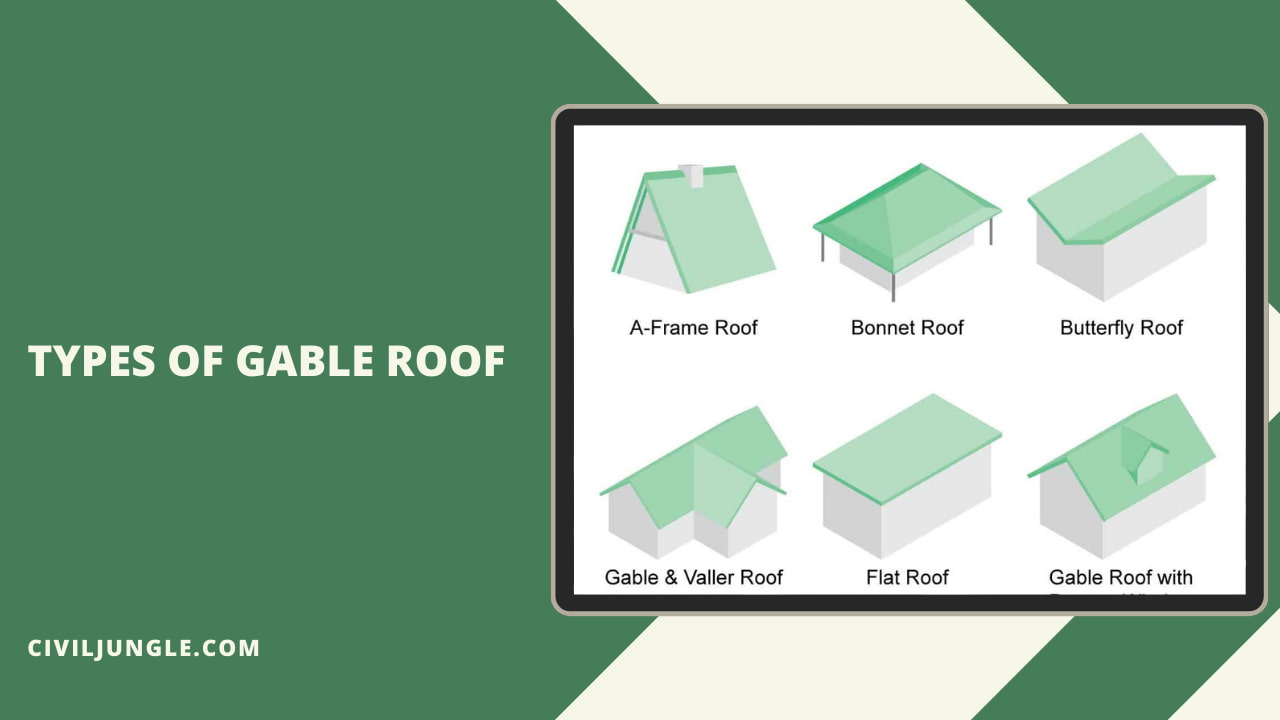
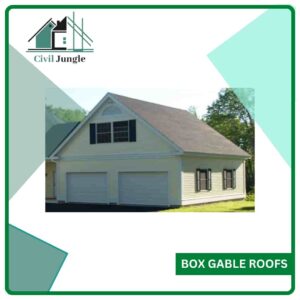
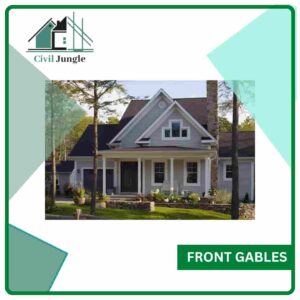
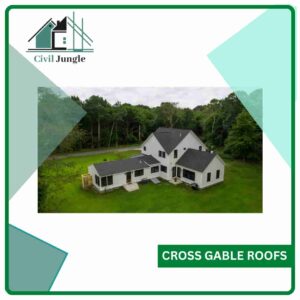
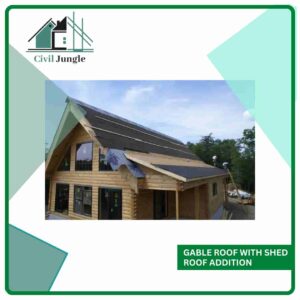

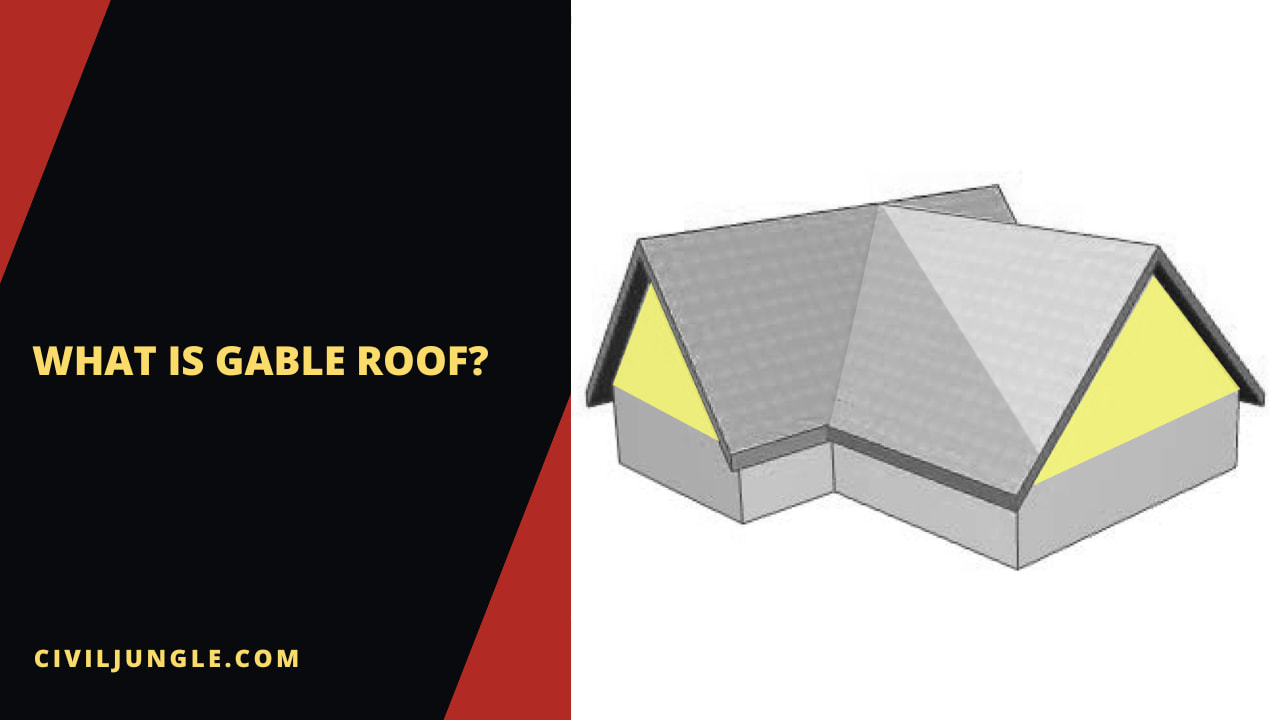
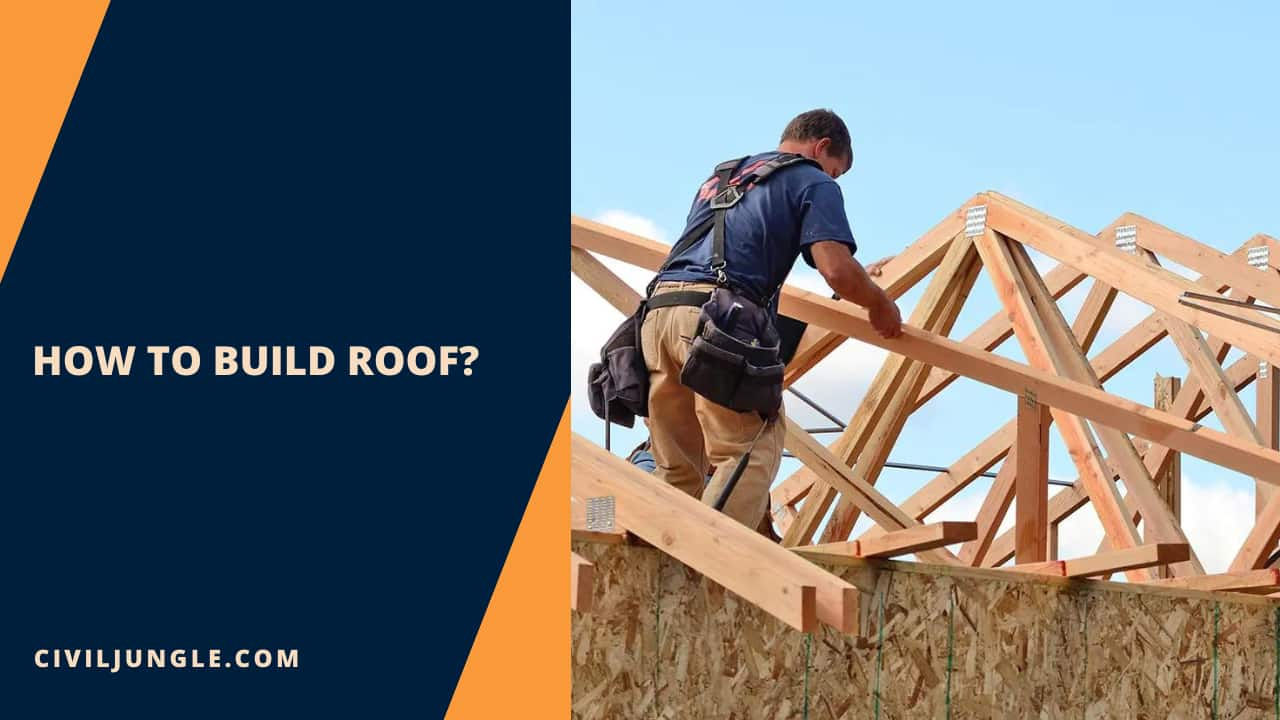
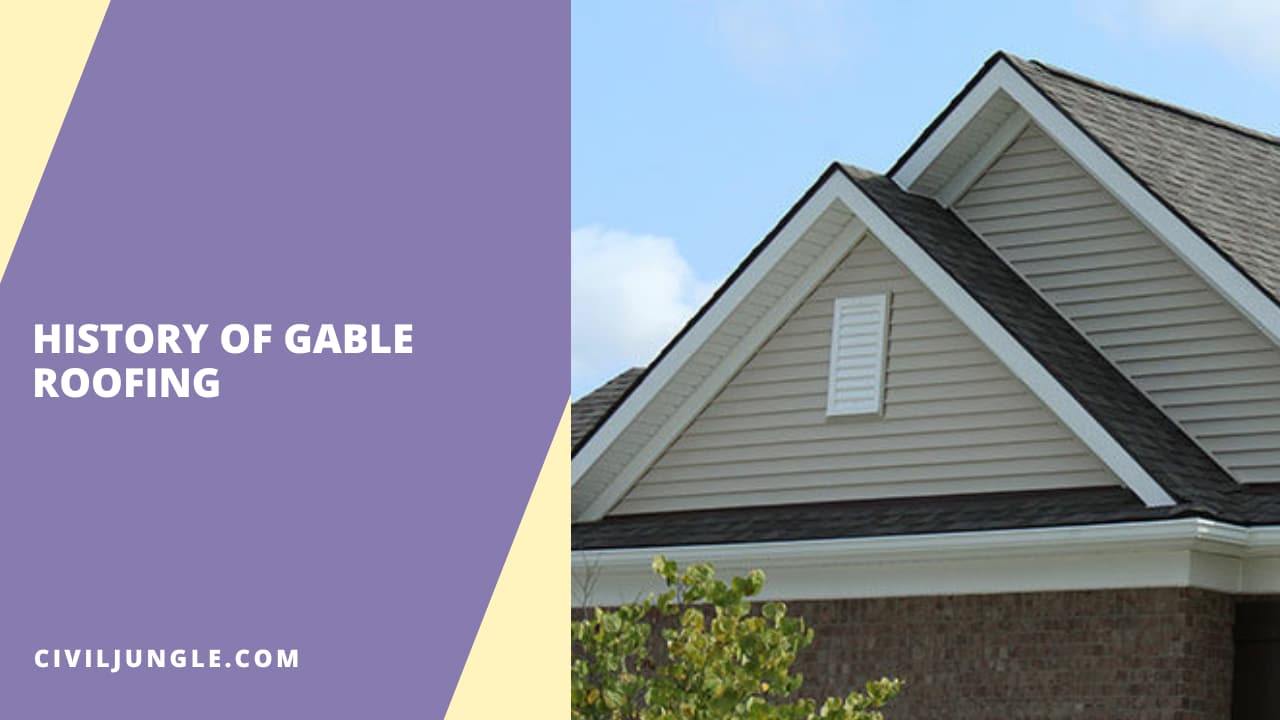
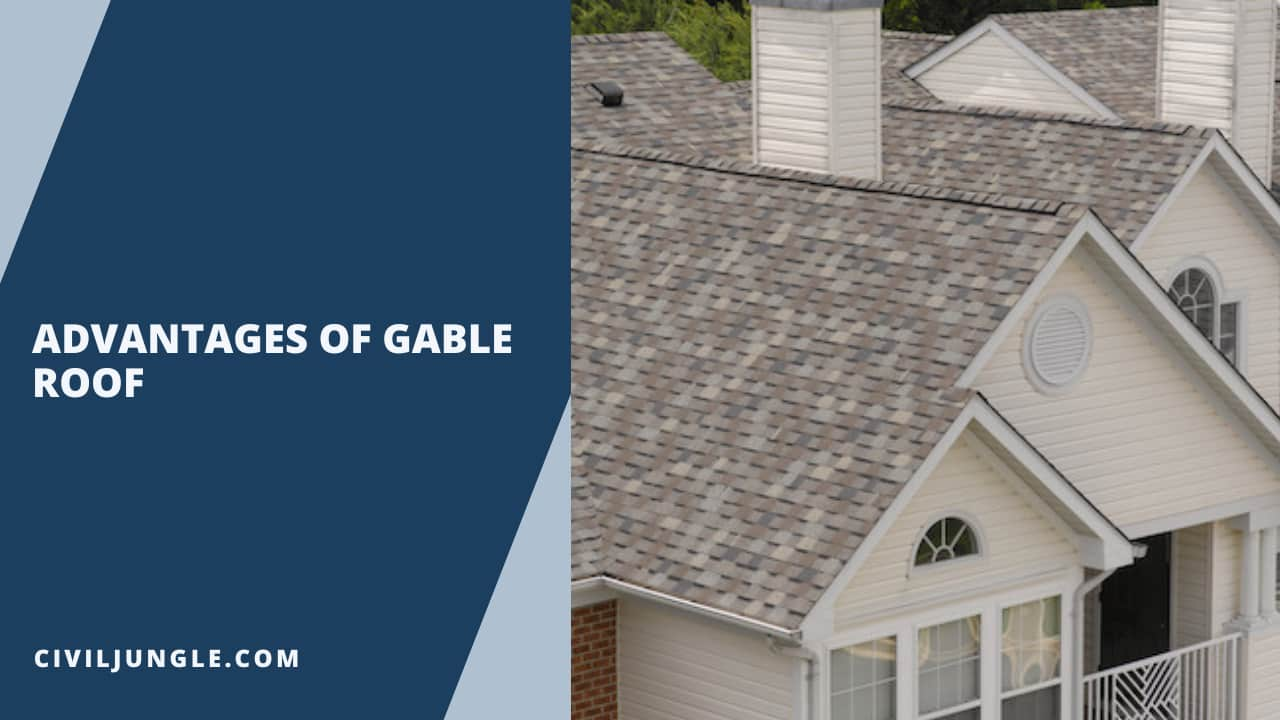
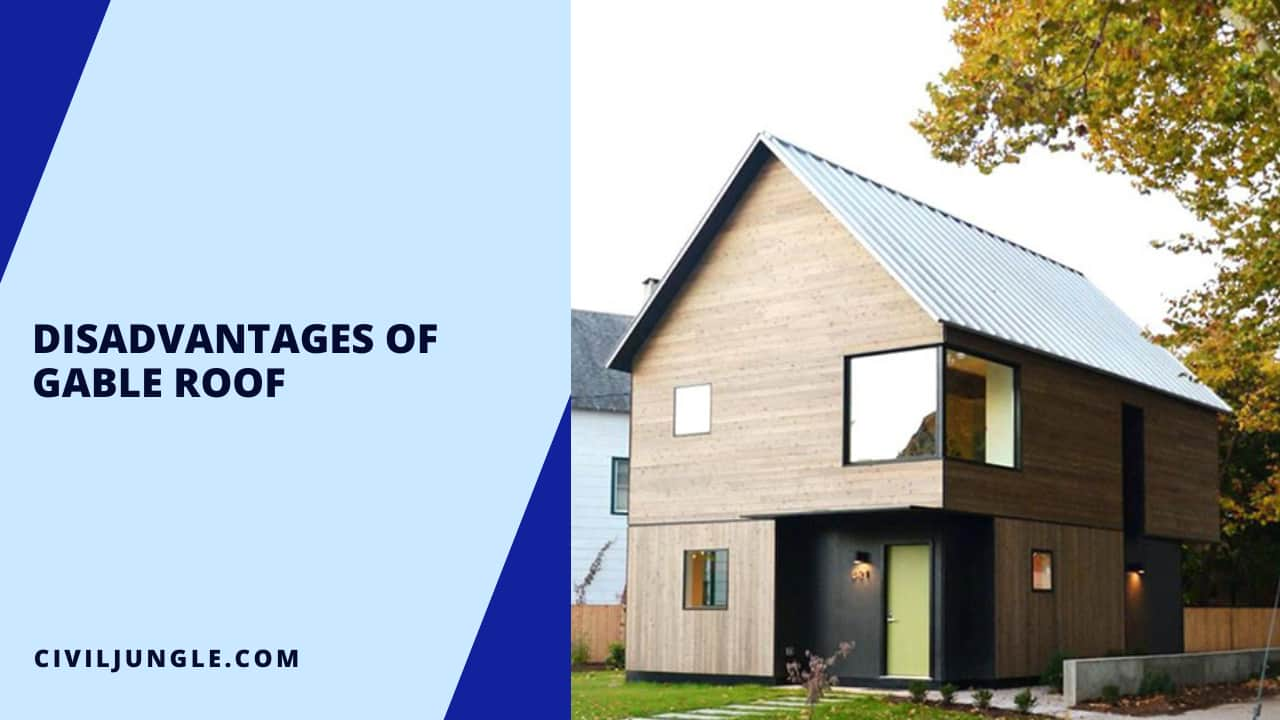
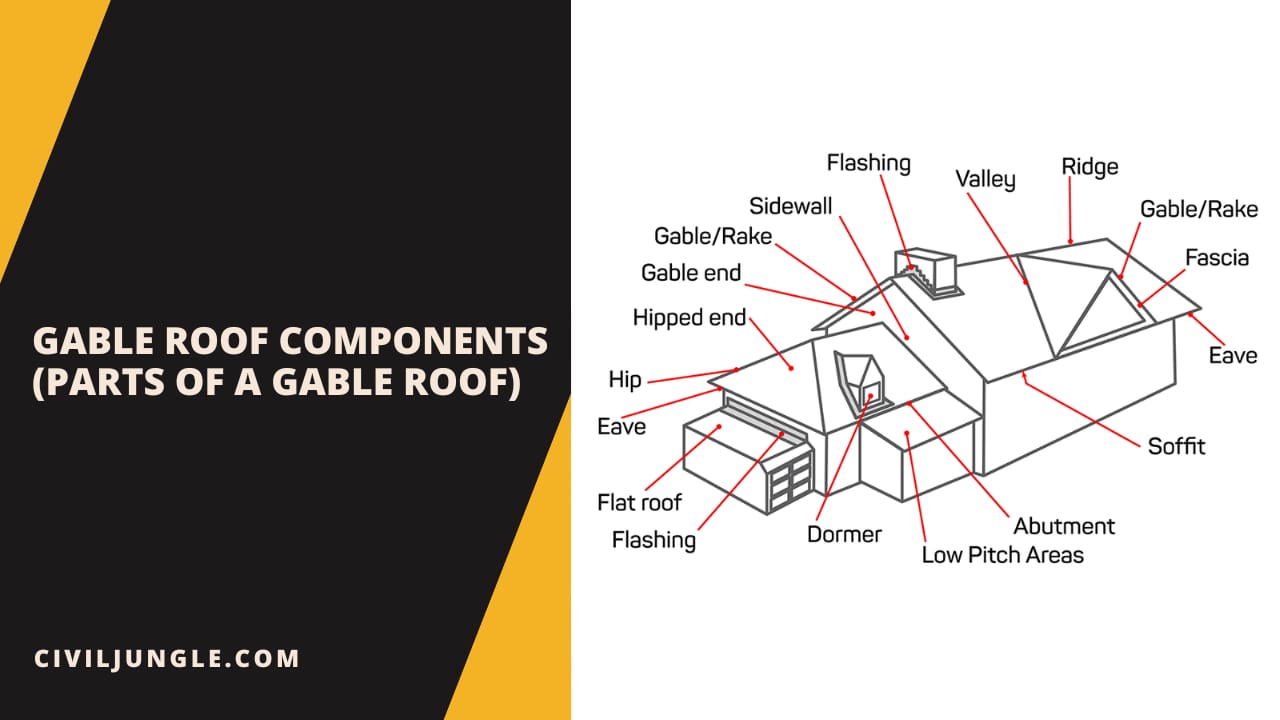
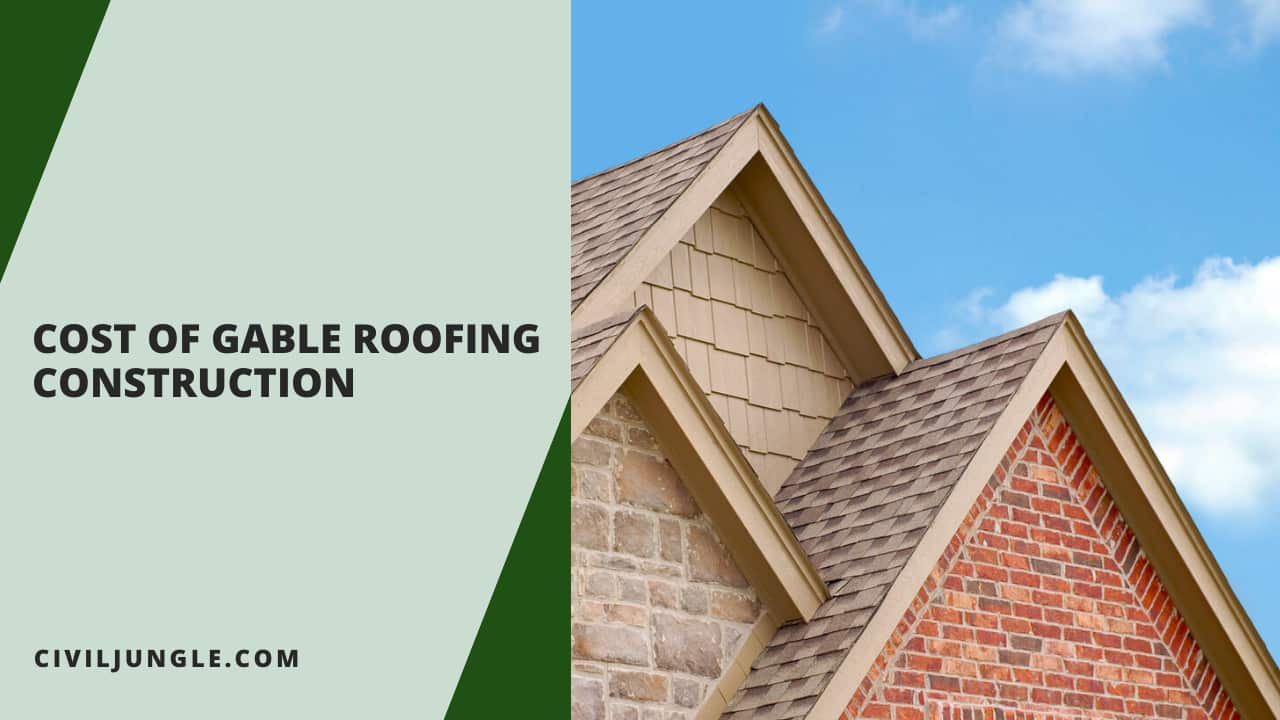

Leave a Reply